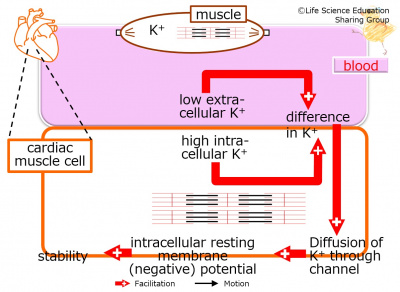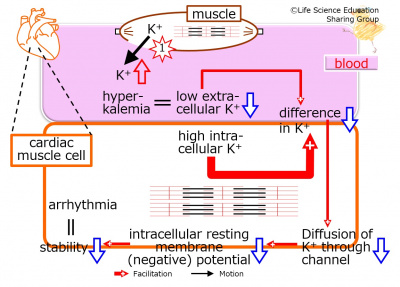Nervous system/overview of neurons/Crush syndrome/effect of hyperkalemia on cardiac muscle
| When a muscle is crushed, K+ in blood is increased, and in cardiac muscle cells, diffusion of K+ through K+ channel is less, resting membrane potential is less, stability of the cell is less, causing arrythmia. |
Both the high intra-cellular potassium (K+) and low extra-cellular potassium (K+) bring about the difference, which is the driving force of the diffusion of potassium ion (K+) through channel.
With more diffusion, the intracellular resting membrane negative potential increases, and with more intracellular resting membrane potential, the cell becomes more stable.
When the legs are compressed for a long time, such as in earthquake-destroyed buildings, a muscle is crushed, potassium (K+) is released and then increased in the blood. Hyperkalemia means extracellular potassium is NOT as low, which also means that the difference between extra- and intra- cellular potassium (K+) is less.
There will be less diffusion of K+ through the K+ channel, resting membrane potential decreases, and the stability of the cardiac muscle cell decreases, causing arrhythmia.
Challenge Quiz
When a muscle is crushed, K+ in blood is increased decreased , and in cardiac muscle cells, diffusion of K+ through K+ channel is less more , resting membrane potential is less more , stability of the cell is less more , causing arrythmia.


